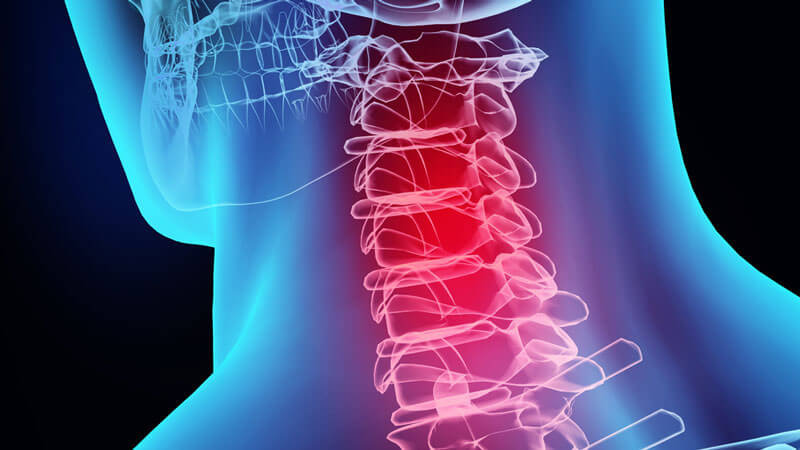Motor Vehicle Accident (MVA) and Car Accident Injuries
What do you never do if you were involved in a traffic accident? Never get out of your car, survey the damage, see none, feel no pain, and count yourself lucky. Do not drive away without exchanging your id and insurance companies. But why not you may ask? Because some pain and injuries after a car accident take days or weeks to show up. Whiplash injuries, shoulder pain, herniated disks, lower back pain, and brain injuries may take a while to make themselves known. Always exchange ids and insurance companies. Make an appointment with a doctor. Next, make an appointment with a physiotherapist. A car accident injury can have many levels of severity. That may save you a lot of grief and pain.
And after a more serious accident do not neglect to see a doctor and physiotherapist as soon as possible. Don’t put it off. You could prevent yourself from experiencing years of pain.
It is stressful to experience a car accident or Motor Vehicle Accident (MVA). Not only do you have to worry about having to deal with who’s at fault, the insurance companies, and vehicle repair shops, you also have to consider any mental and/or physical conditions that result from the trauma you go through during a vehicular incident.
You will need to make an appointment to see a medical professional. This should occur within 10 days of the accident. Injuries that occur due to sudden stress to the body sometimes do not manifest right away. Treat your injuries sooner rather than later. They will heal faster and reduce the time needed for a full recovery.
Educate Yourself about Whiplash, Concussions, and Soft Tissue Injuries
WAD
WAD stands for Whiplash-Associated Disorders and describes the injury and symptoms of an accident involving an acceleration-deceleration mechanism, usually caused by an MVA or car accident. It was coined by the QTF (Quebec Task Force on Whiplash-Associated Disorders).6 The QTF has divided WADs into five grades:
- 0: no neck pain, stiffness, or any physical signs are noticed
- 1: neck complaints of pain, stiffness, or tenderness only but no physical signs are noted by the examining physician.
- 2: neck complaints and the examining physician finds decreased range of motion and point tenderness in the neck.
- 3: neck complaints plus neurological signs such as decreased deep tendon reflexes, weakness, and sensory deficits.
- 4: neck complaints and fracture or dislocation, or injury to the spinal cord.
Whiplash Syndrome
If symptoms of a whiplash-related injury last longer than six months, it is called Whiplash Syndrome. Whiplash Syndrome can often be avoided with early rehabilitation, however, that usually depends on the WAD Grade of the injury.
Concussion
The word Concussion is Latin and means “to shake violently”.7 It is an injury that is usually caused by a sudden blow to the head. A concussion is an injury that can affect the brain and can sometimes cause a temporary loss of normal brain function.
People who suffer from a concussion report memory loss, impaired judgment, and a lack of balance and/or muscle coordination.8 It can sometimes be difficult to diagnose a concussion, especially when there is no visible trauma to the head, that is why it is important to make sure you have a professional check you out as soon as possible after being involved in an MVA, even if you don’t believe you have been injured.
Soft Tissue Injuries
There are many types of soft tissue injuries ranging from contusions (bruises) to strains and sprains. Soft tissue injuries are never good and if left untreated can lead to permanent damage in some cases. An injury resulting from blunt force trauma can cause bleeding into the surrounding tissue where swelling and discoloration will usually occur, and this can also be very painful. Treat these types of injuries as quickly as possible to avoid unnecessary pain and discomfort. You will benefit from attending to this quickly. Call ProActive Physiotherapy in Edmonton today to set up a consultation.
If you have been in a Motor Vehicle Accident (MVA) recently, and you think you feel fine, and there is no need for you to get a professional opinion, you may want to get a second opinion. Many of the symptoms of an MVA-related injury are not as obvious as you may think, or even reveal themselves right away. In addition, you are (or might be) miss-diagnosing symptoms as not being related to injuries that you sustained from a vehicle accident.
Some of the symptoms that are related to whiplash, concussions, and soft tissue injuries include, but are not limited to the following:
- Pain
- Stiffness
- Fatigue
- Headaches
- Dizziness
- Confusion
- Irritability
- Imbalance
- Numbness
- Tingling
- Memory Loss
- Difficulty concentrating
- Nausea or vomiting
- Sensitivity to light
- Loss of smell or taste
- Trouble falling asleep
- Difficulty looking up
- Discomfort while reaching forward
- Discoloration
- Swelling
Contact your physician or physiotherapist if you feel any of these symptoms. Especially if you have been injured in a vehicle accident.
Main causes of whiplash, concussions, and soft tissue injuries

Although Motor Vehicle Accidents (MVAs) are the most common cause of whiplash-related injuries, it is also possible to receive these types of injuries in other ways. Before there were motor vehicles on the road there were trains on the railroad. A train collision in 1919 caused the first documented whiplash-related injury. It was called “Railway Spine”. The rate of incidents and accidents has increased since then. This is because many more people drive motor vehicles.7
You might be thinking to yourself that as long as you stay far away from, and especially never get into, anything with a motor you’re safe, then let me break this to you gently; there are many ways to be injured similarly as being in an MVA, such as the following:
- Falling
- Headbanging
- Bungie jumping
- Hit in the head
- Skiing accident
- Being close to explosions
- Unsanctioned carnival rides and/or water slides.
You must have a medical professional check your injury. Let your doctor and your physiotherapist help you get back to your 100% so you can get back to doing whatever it is you want to do (as long as it doesn’t involve illegal water slides).
You will not always notice the impacts of an MVA right away. The obvious effects are potential hospital costs and vehicle repair costs, the time spent visiting doctors, and the time lost without a vehicle. Things you may not consider though are loss of sleep, time lost at work, and potentially time not spent with your family.
Injuries left untreated could lead to permanent damage, potentially preventing you from being able to perform work-related tasks efficiently. Neck and back pain due to whiplash-related injuries are not uncommon. They can make simple everyday tasks, like looking at your smart-watch, very painful.
You must visit your doctor or health care practitioner right away if you have been in an MVA. Treatment is by far the best way to reduce the effects of injuries sustained during an accident or eliminate them, as quickly as possible.
I was involved in a motor vehicle accident, now what?
You must stay calm if you are in an MVA. Attempt to gain as much information about the incident as possible while it’s still fresh in your mind. The province of Alberta provides a couple of invaluable resources to assist you with this task. This also includes a form you can download right now and print out16. You can keep this in your vehicle, along with a pen, to fill out in the case of an unfortunate incident. This is not a legal document. It is simply a way for you to thoroughly handle the situation. You will use this to record the specifics of the accident.11
You will need to have your injuries assessed if you are in a motor vehicle accident. You must seek medical attention as soon as possible. The next step is to try to prevent further risk of injury by staying clear of the road. Additionally, do not stand in front or behind a vehicle to inspect the damage.
Once everyone is safe, try to collect as much information as possible about the collision, including taking pictures and filling out the useful form mentioned earlier. It’s a good idea to get as much information about the other driver(s) involved, as well as any witness testimony that can be provided.
Your next steps
It is important to keep in mind that if anyone is injured, any of the vehicles are no longer drivable, or if any of the drivers fail to provide proof of insurance or a driver’s license, then it is required to report the incident to the police. And if the total damage to all vehicles and property appears to be more than $2,000, then failing to file a Collision Report Form could result in demerit points or a fine.
No matter what your insurance provider tells you, it is also up to you where you seek attention for your car repairs and your you-repairs. Your insurance company can also recommend a repair shop and a therapist for you. Additionally, is not uncommon for insurance providers to have deals with repair shops and therapists. Ultimately it is your decision where you go. In some cases, your insurer may also have your vehicle repaired at a shop of their choosing after giving you formal notice. However, they must repair the vehicle to the condition it was in before the collision occurred.
Treatment for injuries sustained in motor vehicle collisions in Alberta is regulated by the Alberta Regulation Insurance Act and specifically under the Diagnostic and Treatment Protocols Regulation. Under these regulations, a claimant must submit their claim within ten days of their collision by submitting an AB-1 form.9, 10
Statistics
Edmonton has historically had a higher-than-average number of motor vehicle-related incidents resulting in serious injury or death. That’s why in 2015 the city of Edmonton initiated the Vision Zero program designed to reduce the number of traffic-related incidents on our city’s streets.
The goal of Vision Zero is to eliminate traffic accidents in Edmonton by the year 2032. This sounds like an impossible feat, however, since the inception of Vision Zero in 2015, traffic-related fatalities have decreased by 63%, serious injuries have decreased by 40% and pedestrian fatalities and serious injuries have decreased by 54%.15 That’s pretty impressive, but 2032 is a long time away and in the meantime, if do find yourself involved in an MVA the best thing you can do is to contact your physician or therapist as soon as possible.
Check out the Edmonton Vehicle Collision Statistics.
So now you know that after any minor or major car accident, get id and insurance information from the other driver or drivers. Then hightail it to the doctor and your Edmonton physiotherapist.
Sources
- https://proactivesportspt.ca/
- https://proactivesportspt.ca/physical-therapy-treatments/whiplash-car-accident-injury-mgmt/
- https://proactivesportspt.ca/physical-therapy-services/motor-vehicle-accident-injuries/
- https://leadingedgephysio.com/blog/physiotherapy-for-car-accident-whiplash-recovery/
- https://www.edmonton.ca/transportation/traffic_safety/motor-vehicle-collisions
- https://en.wikipedia.org/wiki/Whiplash_(medicine)
- https://www.webmd.com/brain/concussion-traumatic-brain-injury-symptoms-causes-treatments
- https://www.aans.org/en/Patients/Neurosurgical-Conditions-and-Treatments/Concussion
- https://www.coronaphysio.com/motor-vehicle-accidents
- https://cfr.forms.gov.ab.ca/Form/AB0001.pdf
- https://open.alberta.ca/dataset/what-to-do-after-an-auto-collision-and-collection-of-information-worksheet
- https://www.alberta.ca/automobile-insurance.aspx
- https://airb.alberta.ca/
- https://data.edmonton.ca/stories/s/Automated-Traffic-Enforcement/8afu-5d24
- https://www.edmonton.ca/transportation/traffic-safety
- https://open.alberta.ca/dataset/a82c0149-f23a-40b6-af13-b8f32a7b3857/resource/833454a3-4e58-4181-bd2a-da84e33d08dd/download/what-to-do-after-an-auto-collision-summary-and-worksheet.pdf
Tags: Car Accident Injury Treatment, What to do After Car Accident Injury ?, Whiplash Injury Treatment



